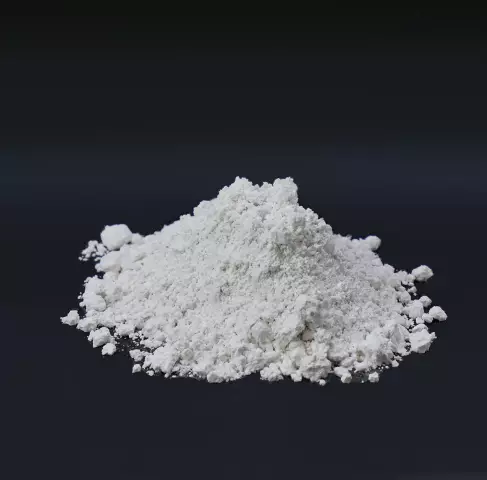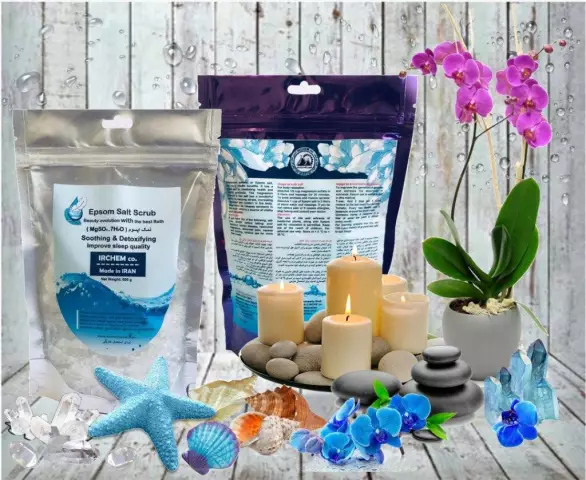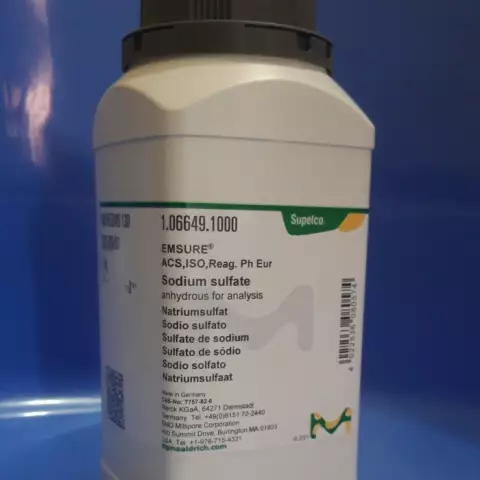- Author Rachel Wainwright [email protected].
- Public 2023-12-15 07:39.
- Last modified 2025-11-02 20:14.
Calcium sulfate

Calcium sulfate (calcium salt of sulfuric acid) is an inorganic compound represented by colorless or light yellow crystals without a pronounced odor with a rhombic structure of the lattice. The substance is insoluble in ethanol. The solubility of calcium sulfate in water is insignificant and it only decreases with an increase in its temperature.
In nature, the calcium sulfate content determines the natural hardness of water.
In the environment, calcium sulfate is represented by dihydrate (gypsum, selenite). In anhydrous state, it is an anhydrite mineral formed in sedimentary strata as a result of natural dehydration of gypsum deposits. Before use, the raw material is cleaned of impurities (strontium, silicates) and calcined at a temperature of 110 degrees Celsius to ensure the release of gypsum from water. The result is a hemihydrate, which is otherwise called "Parisian plaster".
The production of calcium sulfate on an industrial scale is carried out with the help of the extraction of a substance that is part of natural minerals (selenite, gypsum, alabaster).
Also, calcium sulfate can be obtained synthetically - by the fusion reaction of CaCl 2 (calcium chloride) with K 2 SO 4 (potassium sulfate).
The chemical formula of the substance is CaSO4.
Registered as a food additive E516.
Application of calcium sulfate
A mineral composed of calcium sulfate dihydrate (gypsum) has a long history of its use: the first mention of the use of the substance dates back to 1961 in the field of clinical use. In those years, the material was used in the restoration of various bone injuries of tuberculous and traumatic origin. According to experts, calcium sulfate was completely resorbed within five weeks.

The material really has the ability to completely resorb in natural conditions, thanks to which it is successfully used in dentistry, implantology, orthopedics.
In the food industry, calcium sulfate is used as an additive-emulsifier (a substance that ensures the creation of emulsions from other obviously immiscible liquids), a hardener, a desiccant, a bread and flour improver, a coagulant. Used in the production of tofu cheese, beer, confectionery, dietary supplements, canned vegetables, wine (to acidify the wort). Calcium sulfate is often added to foods as a salt substitute.
In addition to the food industry, calcium sulfate is used in medicine and construction. Artificially created crystals of calcium sulfate doped with manganese and samarium are used as a thermoluminescent material.
Impact on health
According to the results of numerous studies and observations, the calcium sulfate food supplement has been recognized as harmless and approved for use, both for food and for medical purposes. The maximum allowable intake of calcium sulfate has also not been established.
Found a mistake in the text? Select it and press Ctrl + Enter.






